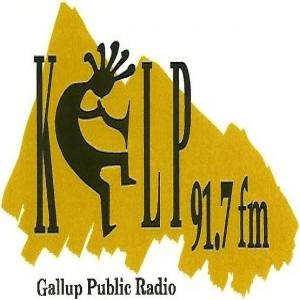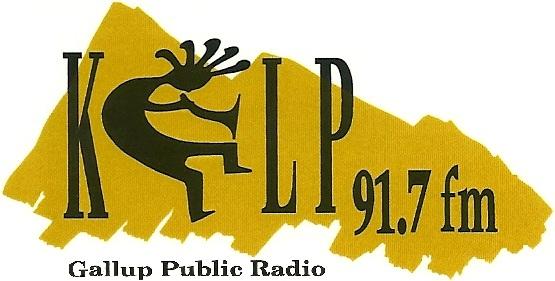Episodes

Friday Nov 22, 2019
Full Red Rock Strings Concert recorded Nov 17 2019
Friday Nov 22, 2019
Friday Nov 22, 2019
Program for the November 17, 2019 performance, to be broadcast by KGLP, 91.7 FM, at approximately 12 Noon MT on November 29, 2019:
Red Rock String Ensemble
Sunday, November 17, 2019
First United Methodist Church
Overture on Hebrew Themes, Op 34………………………………Sergei Prokofiev
(1891-1953)
Lori Lovato, clarinet
Luiz Carlos Barrionuevo, violin
Kimberly Robinson Hayes, violin
Bill Krzymowski, viola
Alexander Seman, cello
Erin Neilson, piano
Piano Quintet in E flat major, Op. 44…………………………………Robert Schumann
(1810-1856)
Allegro brillante
In modo d’una marcia. Un poco largamente
Scherzo: Molto vivace – Trio I – Trio II – L’istesso tempo
Allergo, ma non troppo
Gabriela Fogo, violín
Kimberly Robinson Hayes, violín
Bill Krzymowski, viola
Alexander Seman, cello
Caleb Lauber, piano
Symphony No. 100 in G major, “Military”……………………………… Joseph Haydn
(1732-1809)
Adagio – Allegro
Allegretto
Menuetto – Moderato
Finale – Presto
Red Rock String Ensemble
Violin Kimberly Robinson Hayes Flute Katrina Brown
Bill Krzymowski
Gabriela Fogo Oboe Carolyn Mazarakis
Luiz Carlos Barrionuevo Kristen Cochrane
Sarah Jones
Eva Carpenter Clarinet Lori Lovato
Elizabeth Ketner Toni Neff
Catherine Pope
Bassoon Megan Wilcox
Viola Chris Dyer John Mezoff
Jessie Bay
Emmanuel Lalunio Horn Anna Zweirs
Joseph Pope Russ Woods
Cello Hans Freuden Trumpet Keith Cochrane
Doug Mason Kaia Tempest
Alex Seman
Timpani Pat Neff
Bass Thomas Breece
Percussion Sarah Silva
Conductor Sam Pemberton Isaac Jones
Keiyah Jones
Friends
Gabriela Fogo, Alex Seman and Luiz Barrionuevo are graduate students at UNM, Albuquerque.
Carolyn Mazarakis, Keith and Kristen Cochrane and Megan Wilcox play professionally in Albuquerque.
Joseph and Catherine Pope and Hans Freuden are from Farmington and play in the San Juan Symphony.
Caleb Lauber is a physican and works in Fort Defiance.
Lori Lovato is clarinetist with the New Mexico Philharmonic.
This concert is made possible by support from
The Gallup Independent
Program Notes
Overture on Hebrew Themes………………..……………………………………Sergei Prokofiev
Prokofiev only rarely used folk music or themes by other composers in his scores. Early in his career, in fact, he had decided as a matter of principle that he would employ only his own melodies and creative wares in his music. In 1919, when he was living in the United States, he was approached by clarinetist Simeon Bellison to write a chamber work on Hebrew themes. Bellison gave the composer a book containing some themes for possible use as source material. Prokofiev initially rejected the proposal but several days later, after playing through and improvising upon some of the themes, he decided to write the work after all. Prokofiev sketched the Overture on Hebrew Themes in a single day and produced a finished score in less than two weeks’ time.
The work is cast in a single movement featuring two main themes, the first lively and rhythmic, with a Middle Eastern flavor, the second slow and mournful and of a similar ethnic character. Prokofiev develops the themes, especially the first, in the middle section, and imparts much color and variety through Hebrew-flavored harmonies and lively rhythms. Despite the music’s Yiddish flavoring, however, the composer’s distinctive voice is prominent throughout. Prokofiev’s adroit handling of the source material had led some listeners to assume that he himself was Jewish, he was, in fact, a lapsed member of the Russian Orthodox Church.
The chamber ensemble Zimro premiered the Overture on Hebrew Themes on January 20, 1920. The group used the proceeds from the concert to establish a music conservatory in Jerusalem.
Notes by Robert Cummings
Piano Quintet in E flat, Op. 44…………………………………..………………Robert Schumann
Robert Schumann’s Quintet for piano and strings in E flat major has earned a place of distinction among piano quintets, one of only a handful, including Johannes Brahms’ one entry in the genre and Dvorak’s Op. 81, that are known to more than just a few performers. Although Schumann’s merits as a composer of “pure” instrumental music have been debated, no astute listener can doubt that the E flat Quintet is the product of a most fertile musical imagination – fresh, buoyant, and inventive. 1842 was Schumann’s year of chamber music: after producing three string quartets, Schumann decided to make a happy synthesis of his recently acquired fluency with strings and piano – his native instrument. Schumann sketched the Piano Quintet in the remarkably short time of five days and completed the score in the following two weeks.
The first movement, marked Allegro brillante, commences with a joyous idea that rings in the ear long after the texture has taken on a gentler tone. Musings on this idea are set against characteristic pianistic figurations before the second theme, a dialogue between the cello and the viola take over. The development section begins in the key of A flat minor in the piano, fragments of melody are voiced by the other players as the music moves into distant harmonic regions.
In modo d’una Marcia, Un poco largamente is the marking of the following movement, throughout which a funereal atmosphere predominates. The stark, mysterious primary melody is introduced by the first violin against a background of simple quarter notes in the lower registers of the other four instruments. The appearance of the second theme is like a welcome ray of sunlight. It was at Felix Mendelssohn’s urging that Schumann decided to throw away the A flat major section that originally served as the middle portion of this strange movement and replace it with the furious onslaught in F minor (agitato) that posterity has come to know.
The Scherzo, molto vivace, makes a reprise of both the tonality and vivacious character of the first movement. Schumann chooses to use two separate trios in the movement, the first a lyrical canon, and the second a more robust section in A flat minor.
Some of Schumann’s instrumental works conclude with movements that are but pale shadows of their brothers and sisters; not so with the Piano Quintet. From the opening attack in C minor to the final glorious contrapuntal conclusion, the composer imbues this finale with so piquant a mixture of verve, anxiety, and delicate lyricism that it must surely be considered the crowning glory of the entire work. A double fugue serves as the coda bringing the finale to a glorious and noble conclusion.
Symphony No. 100 in G major, “Military”…………..………………………Franz Joseph Haydn
In the wake of Haydn’s glorious first journey to England in 1791-1792 (after three decades in the Esterhaza castle on a marshy plain in Western Hungary), he grew angry and dispirited back home in Vienna, where Prince Anton had moved the court. While he remained the official and full-salaried Esterhazy Kapellmeister, there were no duties. Newspapers took no notice of his return or the extraordinary success abroad.
And so, when Johann Peter Salomon invited Haydn back to England for two more seasons of concerts he was primed. Managing to finagle permission from Prince Anton (who kept him on the payroll as a trophy) he left Vienna on January 19, 1794, accompanied by his copyist Joseph Eissler. Haydn had already composed Symphony No. 99 and portions of 100 and 101 (the latter nicknamed Clock by London audiences) for a new season of 12 concerts in the Hanover Square Rooms, where an expert orchestra now included clarinets. He and Salomon co-conducted – from the harpsichord and the concertmaster’s chairs respectively.
His Military Symphony was the 1794 season’s third and final premiere, on March 31 – Haydn’s 62nd birthday – and enjoyed a career high success. The audience demanded an encore after the second movement, which introduced “Turkish” instruments (triangle, crash cymbals, and bass drum) heretofore heard only in the opera house. Conventional wisdom has held ever since that Haydn was commemorating the war-in-progress against France. Trumpet music in the second movement was an actual army call known as the Austrian General Salute. Surprises include assigning the exposition of the main theme of the first movement (after an Adagio introduction) to the flute and two oboes, unprecedented in concert music before 1794.
Notes by Roger Dettmer
Recorded and edited for broadcast on KGLP, 91.7 FM, by Trey Chavez.


Comments (0)
To leave or reply to comments, please download free Podbean or
No Comments
To leave or reply to comments,
please download free Podbean App.